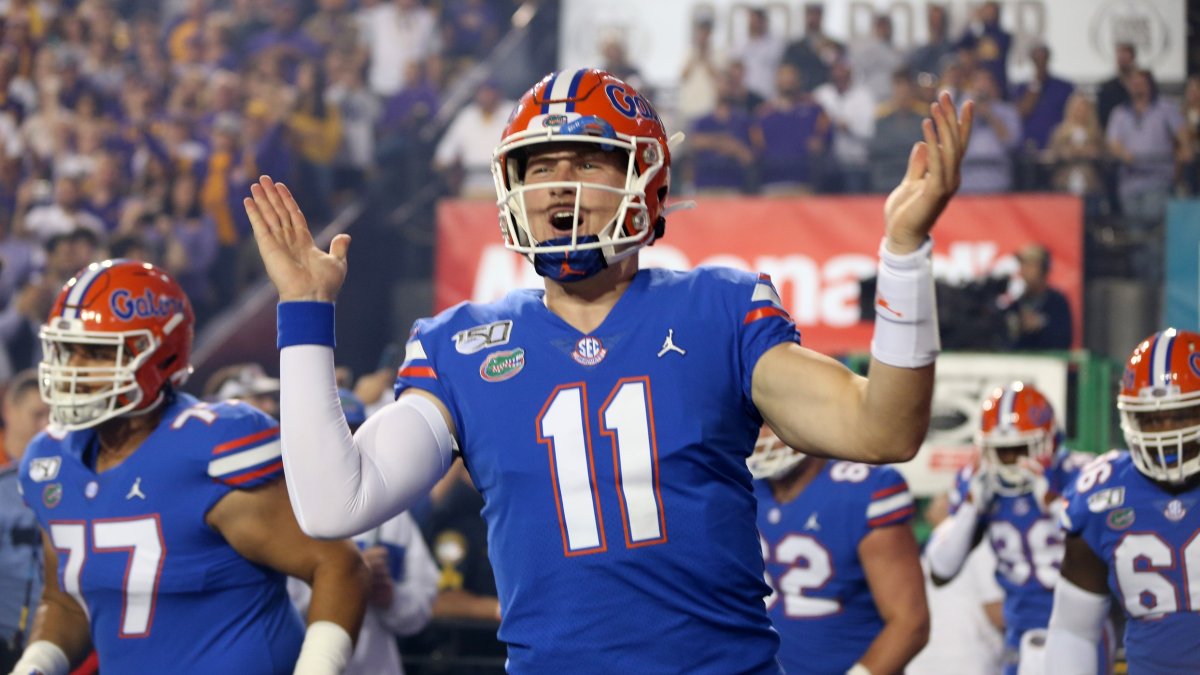Shortly after the 2019-2020 season ended, PFF published the way-too-early top 25 power rankings for the 2020-2021 college football season. Those rankings were not solely based off our ELO system and were heavily influenced by the value each team returns next year based off of PFF’s Wins Above Average (WAA). Many Florida fans were upset to find their squad checking in at 19th.
[Editor’s note: Subscribe to PFF ELITE today to gain access to PFF’s Premium Stats and new Player Grades experience in addition to the 2020 NFL Draft Guide, 2020 Fantasy Rookie Scouting Report, PFF Greenline, all of PFF’s premium article content and more.]
Last week, PFF data scientist Eric Eager put out another too-early top 25 — this one was based off of the PFF ELO system, which is the base power for our NCAA simulation. It considers recruiting, returning players and market information. There, Florida came in at No. 6.
This massive difference in ranking for Florida between the two different methodologies suggests one thing: Florida is the biggest boom or bust team heading into the season. Let's take a deeper dive to see why.
Kyle Trask is the prime example of why you should never trust the box score
It’s pretty easy to fall in love with Florida quarterback Kyle Trask’s box score from his 2019 campaign — he was 13th in the FBS in completion percentage at 66.8%, 23rd in yards per attempt (8.3) and had a solid touchdown to interception ratio of 25 to seven. Yet he ranked 73rd of 103 qualifying FBS quarterbacks in PFF passing grade at 66.4 — this was also not even in the top half of the SEC. Trask posted a PFF grade above 70.0 in only two of his 10 starts this past year.
First off, I will say Trask displayed tremendous accuracy in his first real taste of collegiate action as a redshirt junior. As a matter of fact, he was up there as one of the most accurate quarterbacks in the country. He finished the year tied for 11th in percentage of total passes being deemed accurate according to PFF’s ball-charting process and had one of the five lowest rates of passes that resulted in a quarterback-fault incompletion (i.e. overthrows, underthrows, ball behind receiver, etc.). Accuracy is king — it's the most vital trait for a quarterback to lead a successful passing attack.
As good as Trask’s accuracy is, there is one thing that looms over his 2019 performance that doesn’t show up in the box score and gives us huge cause for concern for 2020. Trask was notably bad when it came to two important metrics PFF tracks: big-time throws (PFF's highest-graded throws) and turnover-worthy plays (PFF's lowest-graded throws and fumbles). Trask was one of only three quarterbacks to rank in the bottom 10 in both big-time throw and turnover-worthy play rate (along with Adrian Martinez of Nebraska and Quinten Dormady of Central Michigan).
The differential between his number of big-time throws and turnover-worthy plays is quite alarming:
Exclusive content for premium subscribers

WANT TO KEEP READING?
Dominate Fantasy Football & Betting with AI-Powered Data & Tools Trusted By All 32 Teams
Already have a subscription? Log in



 © 2025 PFF - all rights reserved.
© 2025 PFF - all rights reserved.